Using high-performance concrete together with high strength HBR500 rebar for more sustainable buildings
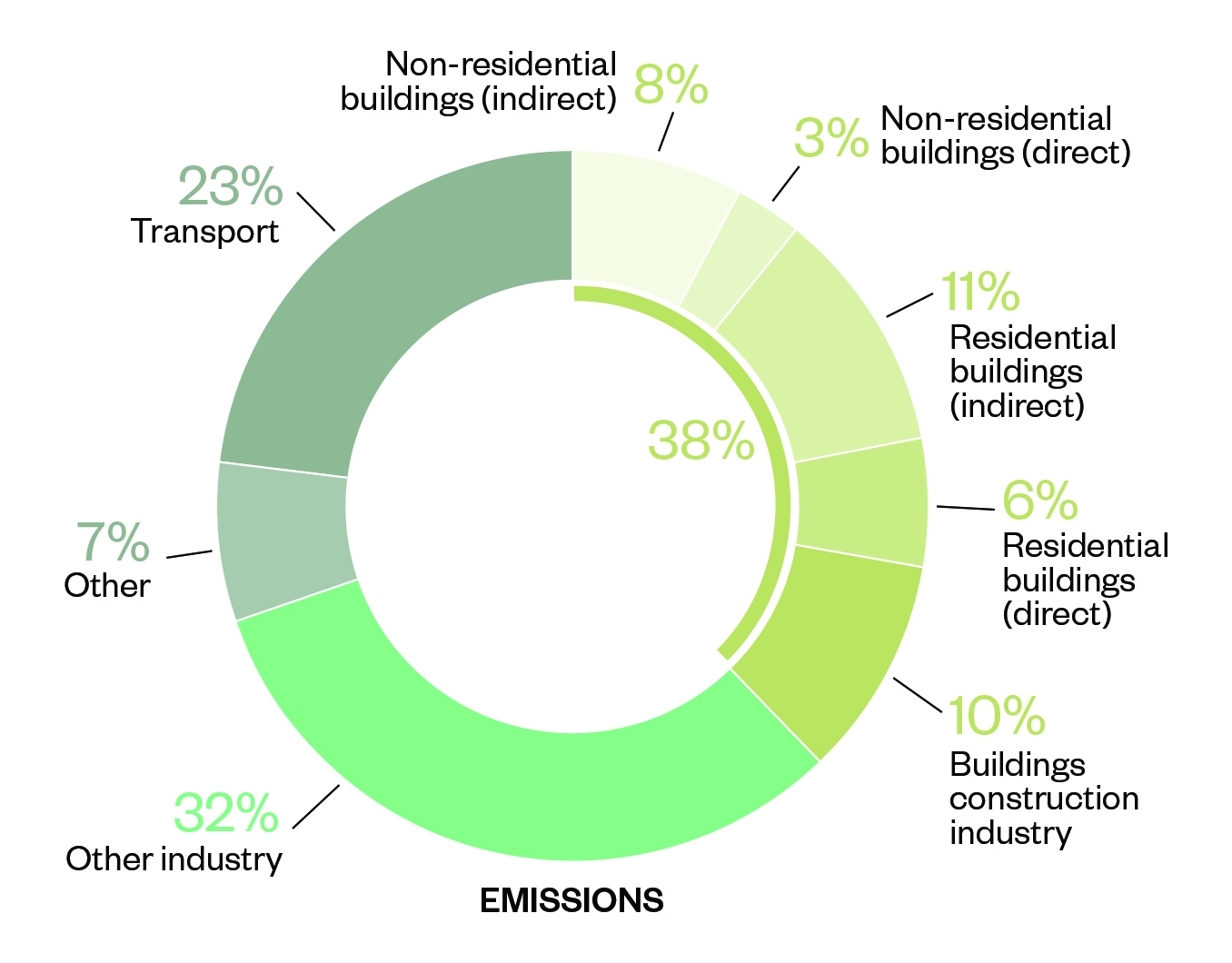
Figure 1: Global share of buildings and construction emissions in 2019.
Adapted from Global Alliance for Buildings and Construction. 2020 Global Status Report for Building and Construction. Available at https://globalabc.org/sites/default/files/inline-files/2020%20Buildings%20GSR_FULL%20REPORT.pdf
Enhanced performance with less material
Using HPC in construction reduces CO2 emissions and contributes to the overall sustainability of a building due to the following factors:
The higher compressive strength of HPC enables the design and construction of leaner structures. Leaner structures mean a reduction in the use of materials like concrete and steel, reducing the CO2 emissions. Using higher compressive strengths, above 50MPa, prove the benefit of increased structural safety with additional usable space in the final structure;
HPC also has a finer pore structure which enables the material to have a longer life cycle. This finer pore structure makes the material less susceptible to aggressive environmental factors, more durable and reduces the risk of rebar corrosion. The safety of the building is increased and less maintenance is
required throughout the life cycle of the building.
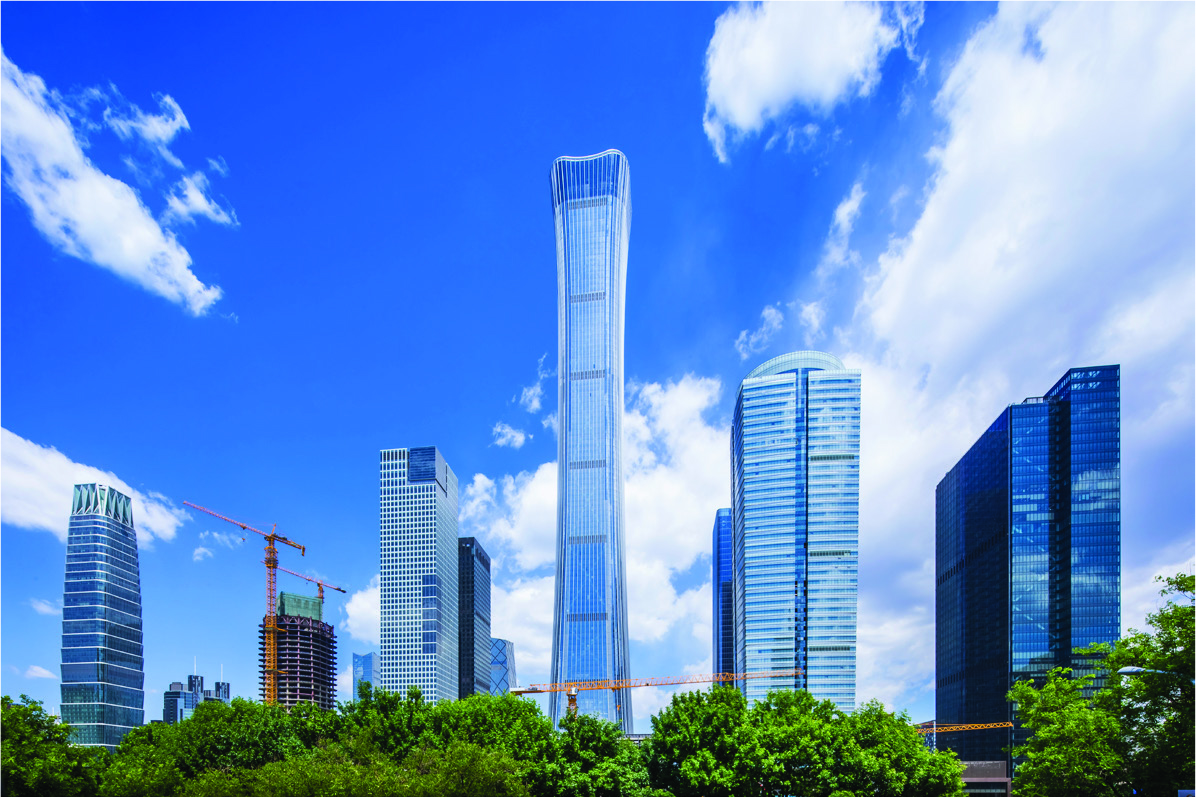
CITIC Tower, popularly known as China Zun Tower, is the tallest building in Beijing at 528m in height. High performance concrete (HPC) was used for this project, with compressive strength from C50MPa to C70MPa at 28 days.
In addition to using HPC, upgrading the rebar used from HRB400 to HRB500 further augments the performance and sustainability of the building.
This is achieved through building leaner structures, using less steel. The concept is exemplified in Figure 2 below. To sustain the same applied force (F), 26% more steel is required when specifying HRB400 instead of HRB500.
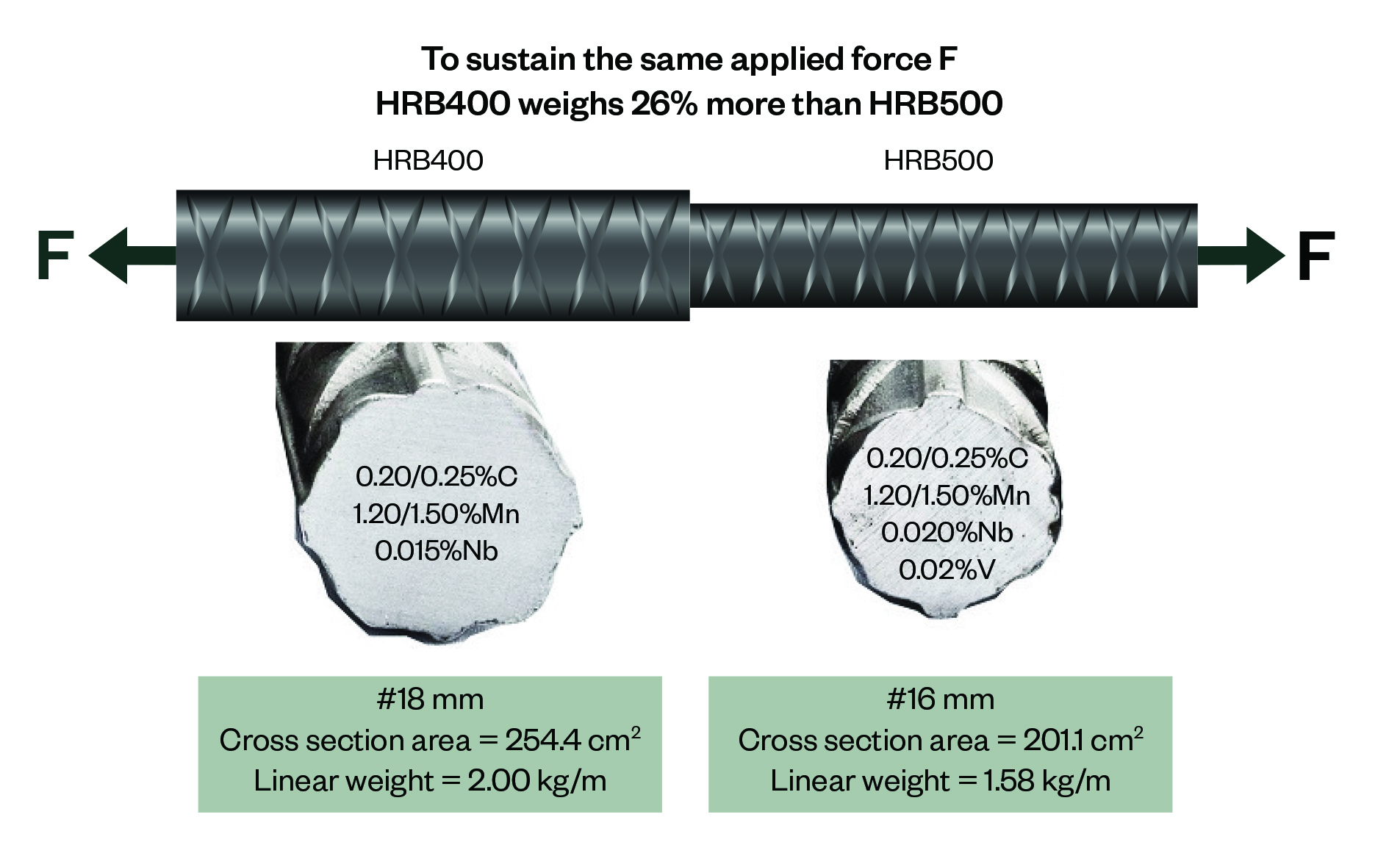
Figure 2: Example of rebar cross section reduction when using HRB500 instead of HRB400, to sustain the same force (F).
To achieve the excellent properties of HRB500, normally a combination of Niobium and vanadium is used.
Table 1 illustrates the chemical compositions and resulting mechanical properties as specified by the standard GB/T 1499.2-2018.
Table 1: Chemical composition and mechanical properties specified by the standards GB/T 1499.2-2018 for HRB400 and HRB50
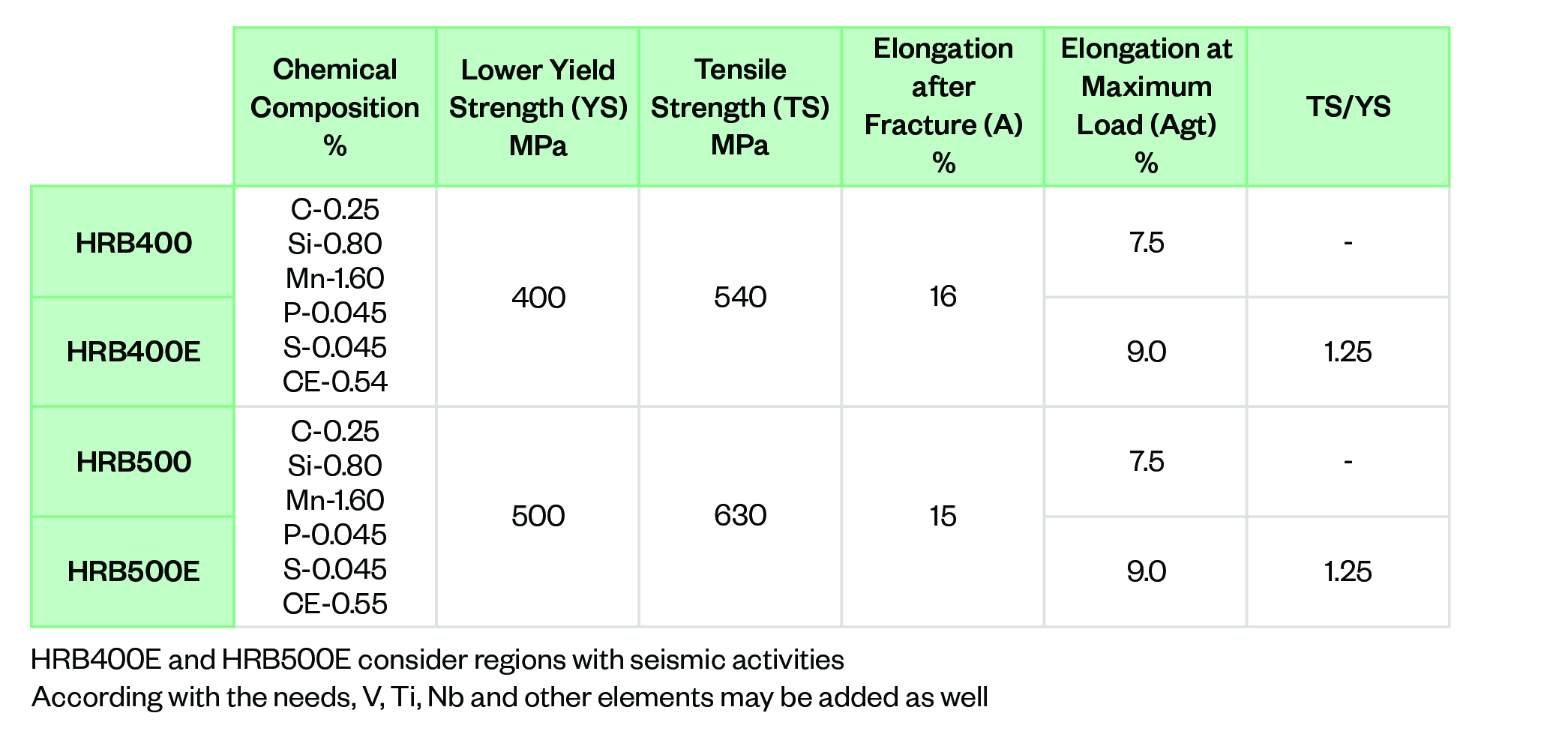
It’s important to note that although HRB500 has a higher strength, it retains the capacity for deformation without rupture, which is essential for the construction of safer and more durable structures. This is demonstrated in Figures 3 and 4 below, especially when subjected to seismic activities. When placed under these seismic conditions, the relation TS/YS > 1.25 is very important for the structure performance. (TS =tensile strength, YS = yield strength).
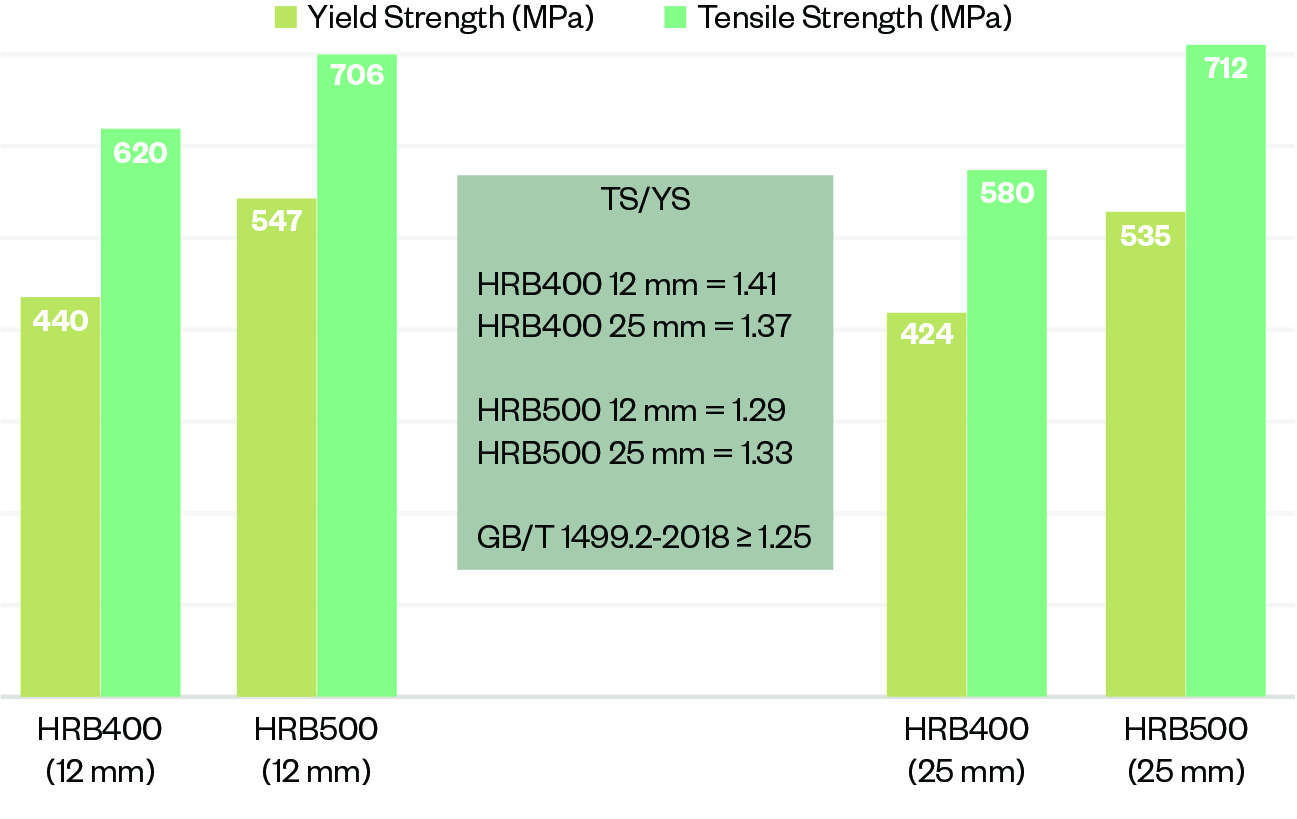
Figure 3: Increase of yield and tensile strength of rebar from HRB400 to HRB500
The figure above demonstrates the increasing yield and tensile strength of HRB500, whilst meeting the standard GB/T 1499.2-2018 for TS/YS > 1.25. This guarantees that the material will have enough deformation for bending without rupture.
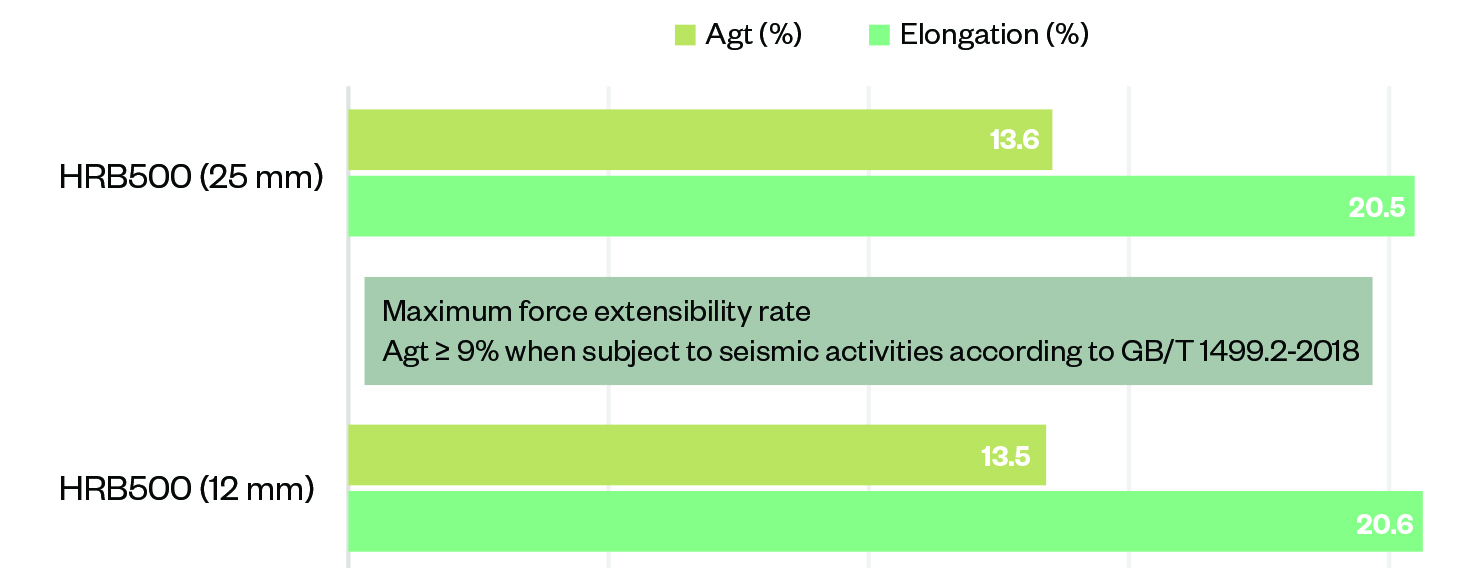
Figure 4: Values of Agt and Elongation of HRB500 with different diameters. Agt is above the minimum specified by GB/T 1499.2-2018
standard of 9% when subject to seismic activities. (Agt = elongation at maximum force during tensile test).
● More efficient construction through lighter and leaner structures allowing the use of prefabricated bar cages, improving construction productivity;
● The use of prefabricated cages reduces the need for heavier equipment at the building site, increasing the safety of the workforce;
● More durable buildings, enabling longer term cost savings associated with maintenance;
● The design of columns using HPC and high strength HRB500 rebar creates more usable space inside the buildings;
● Finally, the reduction in quantity of rebar and consequent reduction in reinforcement, makes it easier to place the concrete into the structure.
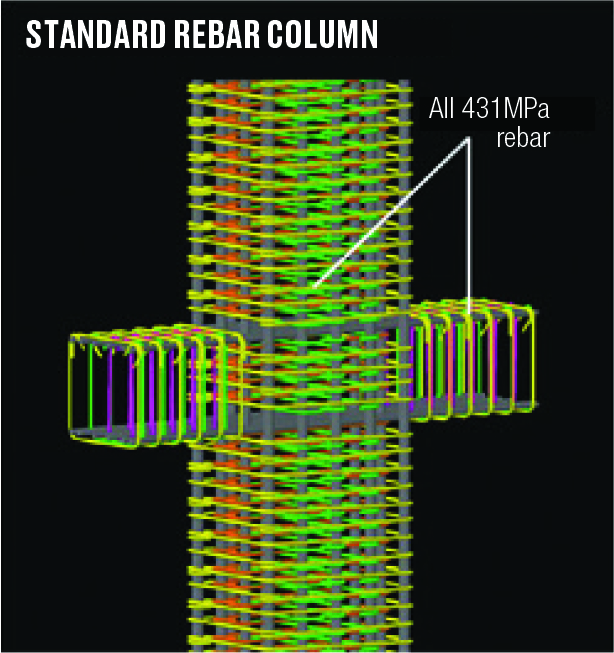
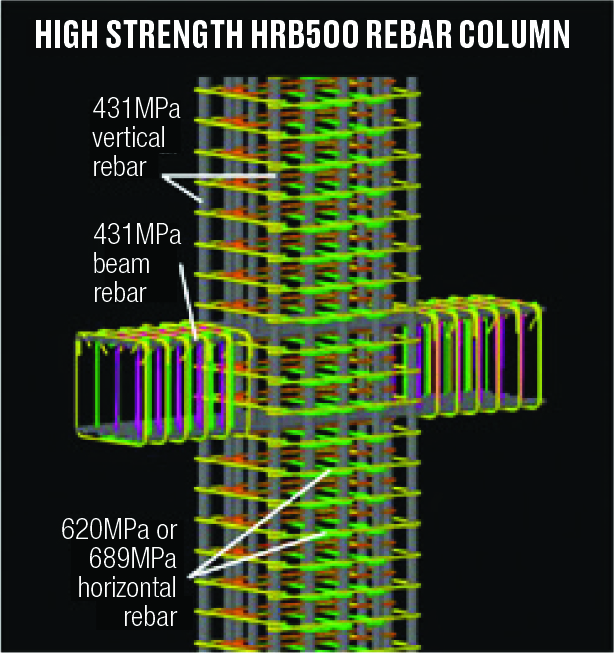
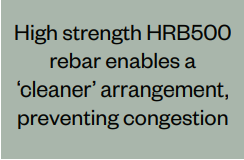
Figure 5: Comparison of the same column when projected to use only 431MPa rebar and when considering the use of 431MPa, 620MPa and 689MPa respectively (https://www.enr.com/articles/9692-high-strength-rebar-market-is-heating-up).
The figure clearly illustrates how using high strength HRB500 rebar improves concrete placement and consolidation due to less congestion.
Want to see this content in another format?
You may also like: